As a full-time RVing family of six, Kimberly Travaglino learned a thing or two about managing the stuff in her 350 sq ft RV. We asked her to share some of her tips and tricks with us in a live webinar back in 2017. Below are some highlights of our conversation. (View the webinar recording here.)
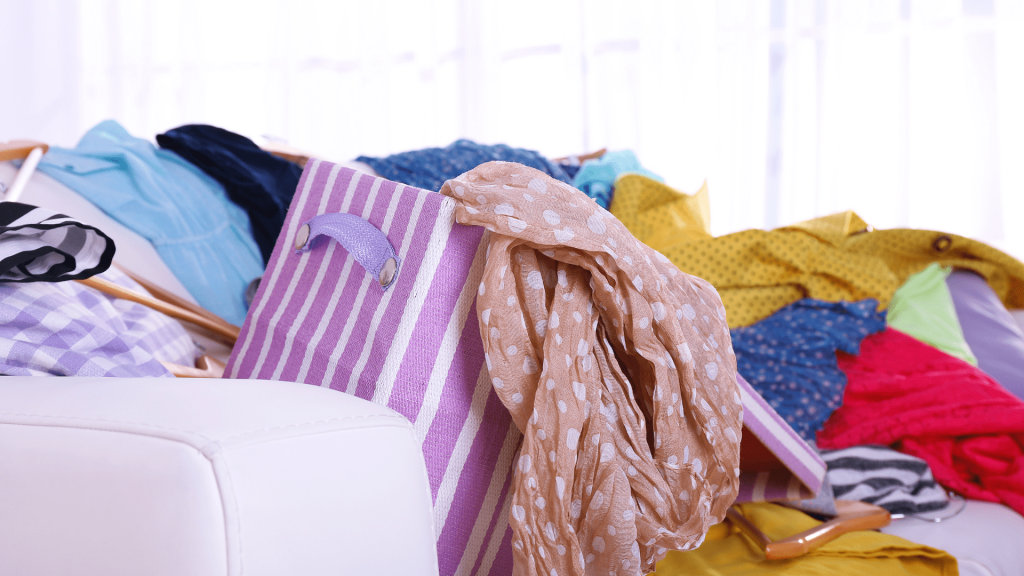
As any traditional American family, mine had copious amounts of stuff, definitely more than would fit in our RV. As a family of six, with four kids and several pets, I knew we had a big project ahead of us that required planning, ruthless execution, and some creativity in making the things we did keep fit in our home on wheels.
It can be daunting to figure out where to start. Here is how I and my family took this head-on.
Make A Plan for Downsizing Stuff
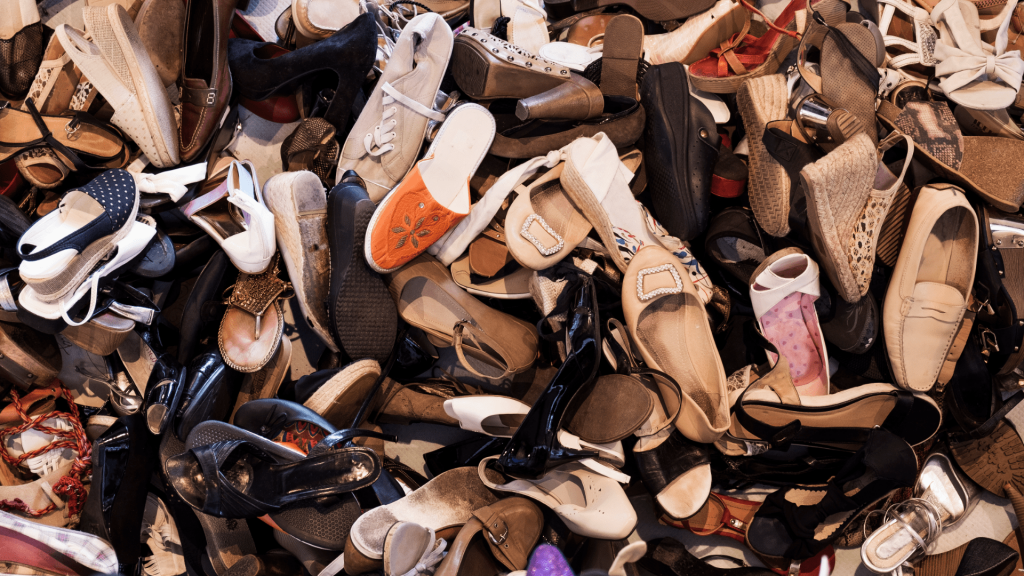
Before we started our journey, I calculated how much square footage I had in my house versus how much square footage I had in the RV. From that, I knew I needed to get rid of 97% of my stuff. 97%. That means I got to keep 3% of my stuff.
How did I figure out what should make the cut for that 3%? Stuff that I absolutely loved that was absolutely essential to our lifestyle is where I started. This included tools, resources, and things that we undoubtedly would need and if I had gotten rid of it, we would have to buy again. We culled our things to make sure what we had was absolutely essential.
What are some of the things that we immediately knew wouldn’t make the cut?
I didn’t need a juicer anymore.
I didn’t need a bread maker.
I did not need an ironing board, 20 pairs of shoes, 90% of my books, my entire CD or DVD collection.
You probably won’t need your bakeware because chances are it won’t fit in your oven. If you’ve already found the perfect RV for you, take some measurements! What dishes will fit in your oven, your microwave, your cabinets, your SINK? If they don’t fit in the usual spaces, do you want to deal with trying to make them fit elsewhere? Probably not.
What else won’t you need? 90% of all the things in your junk drawer, 90% of your tools, 90% of the stuff you’ve spent years accumulating.
Clothes. Like many Americans, we enjoyed having lots of choices when it comes to our daily wardrobes. Clothes are some of the easiest things to acquire, but hardest to get rid of. When you RV, you typically follow temperate climates throughout the year, minimizing your need for bulky winter wear, instead favoring layers of lighter-weight clothing.
When we packed up the house, I had seven leaf bags full of clothes to donate. No, I wasn’t naked, nor was anyone in my family naked after we donated all that clothing. We still had more than enough, even with six family members to clothe. Later, I’m going to give you some tips on storing your clothing.
What Stuff Should We Keep in Our RV?
Let’s talk about things that you do need.
Multipurpose items are your friends. Focus on tools that can do more than one thing in your house, because the more of those you have, the more you can replace multiple tools.
One of our favorite multipurpose tools was our Instant Pot. It’s a rice cooker. It’s a slow cooker. It’s a programmable pressure cooker. I made foods like yogurt and cake in it. It can sauté as well as boil water. This one kitchen appliance can not only replace other single-purpose appliances, but also some cookware!
This applies to lots of other places in your RV, too! If you’re in a house right now, you probably have a litany of cleaning supplies under your sink. The good news is you can get rid of most of them. Look for multipurpose cleaning supplies that are safe for your RV’s systems and materials. Typically, one or two products and a rag can clean most of the surfaces and messes in your RV.
(for more tips on cleaning your RV, check out this post from Donna Smallin Kuper How to Clean Your RV… and Keep It Clean!)
Where to Put Everything
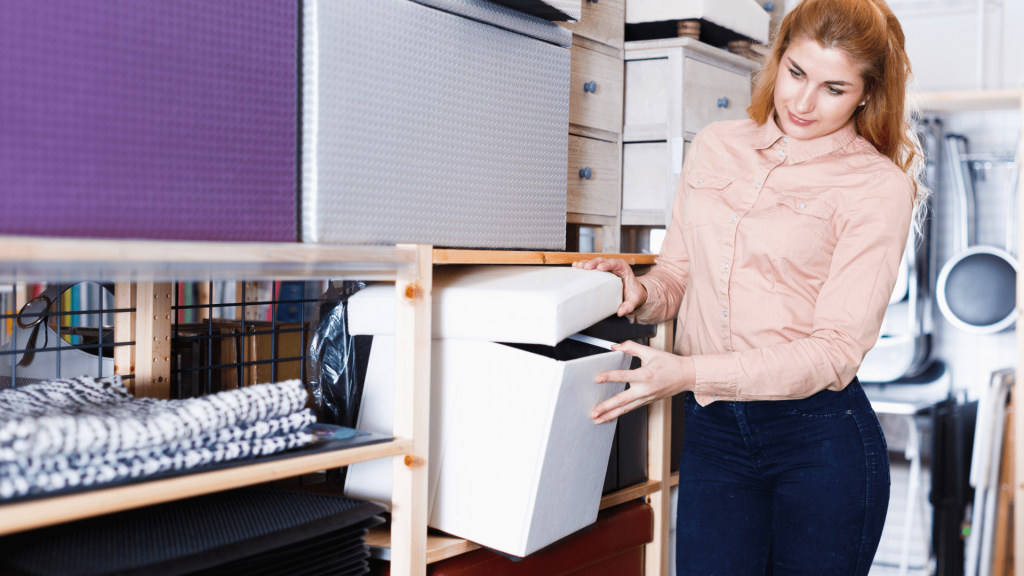
When you start figuring out where to put everything, don’t forget another of my favorite multi-purpose tools, storage furniture! Ottomans and benches that also serve as storage containers are a hit in our RV.
Make the most of your built-in storage, too. My kiddos had nine drawers between the four of them. Each kid has a drawer for tops, a drawer for bottoms and a drawer for underwear, bathing suits and little incidental stuff. My two oldest boys are close in size, so they shared clothes often.
Another organization tip, this is super easy and it can’t be overstated, keep like things together. A friend of mine had a bag for everything. She had a swimming bag, a warm weather bag, a cold weather bag. She had a bag so she can do school on the beach.
For example, we had a beach or pool bag. In that bag we had sunscreen, goggles, some pool toys, and beach towels. That’s where they’re going to live. Your beach towels are not going to live in your linen closet anymore. They’re going to live in your pool bag. When you need to wash them, they get folded then put back into your pool bag so when it’s time, you just grab the pool bag and go!
If you’re a roadschooling family, have a roadschooling bag. Keep it stocked with your often-used tools like markers, scissors, glue, paper, pencils, etc. This makes it easy to take advantage of unexpected opportunities! If the weather is beautiful, and there is an educational opportunity nearby, grab your kids and your school bag and go enjoy some outdoor learning!
If you frequent RV parks, a shower and/or laundry bag could be handy, too. Nothing worse than getting to the bathhouse only to realize you’ve forgotten your shower shoes, washcloth, or worst, your towel! Unless you have a washing machine in your RV, you probably want a laundry bag, too. Keep your detergent, spot treatment, delicates bags, some quarters, and whatever also you use at the laundromat (maybe some snacks and a book?) in that bag so you always have what you need.
Our family also made use of vertical space. For example, cloth magazine racks are handy for storing often-used electronics. We kept our kids’ iPads in one, each device having its own pouch where charging cables and other cords they may have needed are stored with their respective iPad. My husband and I have also used the racks as nightstands in our bedroom. At different times, we used these same racks for homeschooling, too. We had one per child and put each subject into different folders. They had to work through each folder every day, doing this much for history and this much for reading and this much for language arts. It was also a nice visual cue of how much they accomplished and had left.
My kiddos each had their own wall hook for a backpack which held their laptop, mouse, mouse pad, charging cord, and whatever schoolbooks they used. If we wanted to go work from the library or somewhere else, each kid just grabbed their backpack and away we went!
Controlling the Accumulation Of Stuff
Even though, ideally, we gather more memories and experiences than we do things, it is inevitable that you’ll acquire more stuff while on the road. Adopting a one in, one out philosophy really helps minimize the accumulation of more stuff. The bottom line is there’s only so much space in an RV.
If you bring one thing into the camper, you need to put one thing out of the camper and it needs to be in the same type of weight and volume. If it’s not consumable, meaning you’re not going to eat it or use it up, then whatever packaging it came in gets filled with things that need to go. I looked around the RV for what needed to go out in that package, then donated it or trashed it when full, whichever was most appropriate. Otherwise, you’re chasing your tail with stuff. You’ll be purging every three to six months, trying to stay on top of the clutter and stuff.
In that same vein, I want to give you this tip about clothing. Let’s say you’ve paired down your clothing to what you believe is your bare minimum, especially in the closet. What I want you to do is go through your whole closet and put all the hangers in backwards. As you pull out an item to wear it, flip the hanger back to the ‘right’ direction. Essentially what you’re doing is showing yourself what it is you wear and what it is you don’t wear. In three to six months, you can reassess your closet, see what hangers are still backwards and decide if it’s time to rehome those items.
Another way that we employ that same technique is with stickers or sticky notes. Whatever it is that’s piling up in the house, maybe it’s toys or books, I put a removable sticker or sticky note on it. Then, as I use those things, I will remove the sticker. Same as with the clothes, in three to six months, I look at what still has that sticker and decide if we still need it or not. With how quickly kids’ interests can change, this is a really helpful way to ensure you’re only carrying what they enjoy most.
Continually purging and evaluating usefulness of the things in your RV will help you stay organized and maintain a more comfortable living space.
Why Does Your Amount of Stuff Matter In An RV?
Even more important than the obvious answer, limited space, there is only so much weight your RV can safely handle. Before you hit the road, you want to make sure you’re doing what you reasonably can to ensure safe travels for you and your family. Being overweight stresses multiple components of your RV, including your tires and the frame of your RV. If you have a towable RV, being overweight can also overtax your tow vehicle.
It’s very important that you know the maximum weight that your RV has been designed to handle. It will vary greatly from RV to RV, Class Cs to Class As to 5th wheels, to travel trailers. Somewhere in your RV is a sticker, and it’s got all these different numbers on it. You’re looking for the Gross Vehicle Weight Rating (GVWR) which tells you the heaviest weight at which your RV can function safely, as determined by the manufacturer. It doesn’t stop there, though. You’ll often find the “dry weight” listed there (or can otherwise find it from the manufacturer). This is the weight of your RV without any cargo or passengers, and with empty fuel and holding tanks. Subtract this number from your GVWR and you’ll have a very rough idea of how much weight you can add (but don’t forget to account for your fuel and holding tanks, too!).
Learning things the hard way (like whether or not your RV is overweight) can take the fun out of RVing really fast.
RVers Online University can help you learn the easy way and avoid those headaches!
What’s important about that? Well, the important thing is you might have more storage space than you have weight opportunity. It could very likely be that you might have some empty cabinets in your RV because you just don’t have the weight capacity to carry more than that.
What are some heavy things that you could be carrying? Books are crazy heavy. Tools are small but heavy. Liquids, batteries, propane tanks, all of these things can add a lot of weight to your RV.
(Interested in learning more about properly weighing and balancing your RV? Take a look at Rene Agredano’s experience with SmartWeigh!)
Even though only a few of these tips are specific to families with kids, everything I’ve suggested here can be apply to solo RVers, couples, and families. Really, stuff is stuff, right? I hope you’ve learned something new that can help you tame your belongings and enjoy your RV!

Author
Kimberly Travaglino
Kimberly and her family of six have traveled all over North America, learning and having fun as they go. She has written multiple books related to RVing, and even co-founded Fulltime Families, an organization focused on connecting traveling families.
Though she and her family have more recently settled down, they continue to enjoy RV adventures as often as they can!
Did you like this post? Pin it to Pinterest!


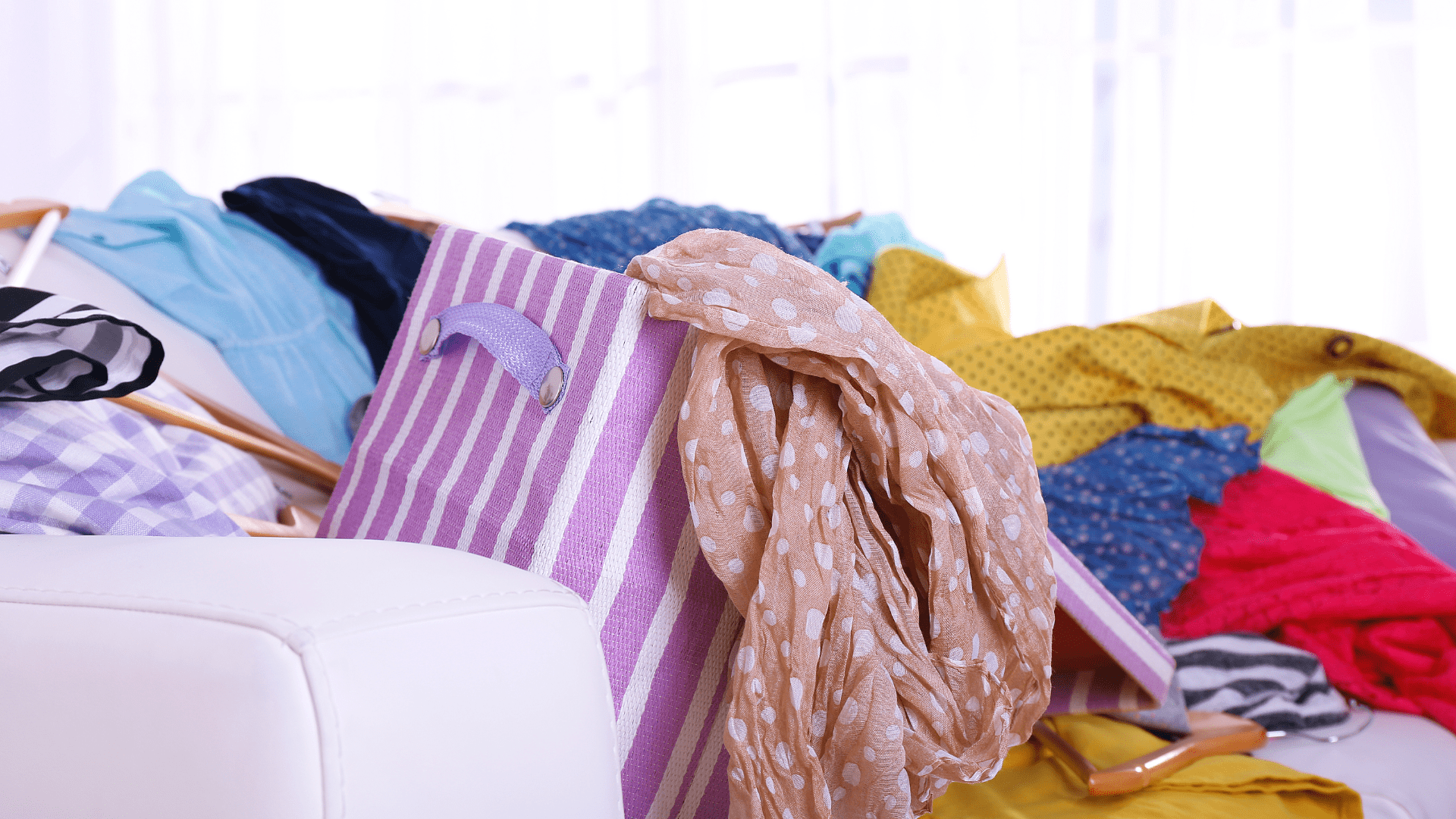




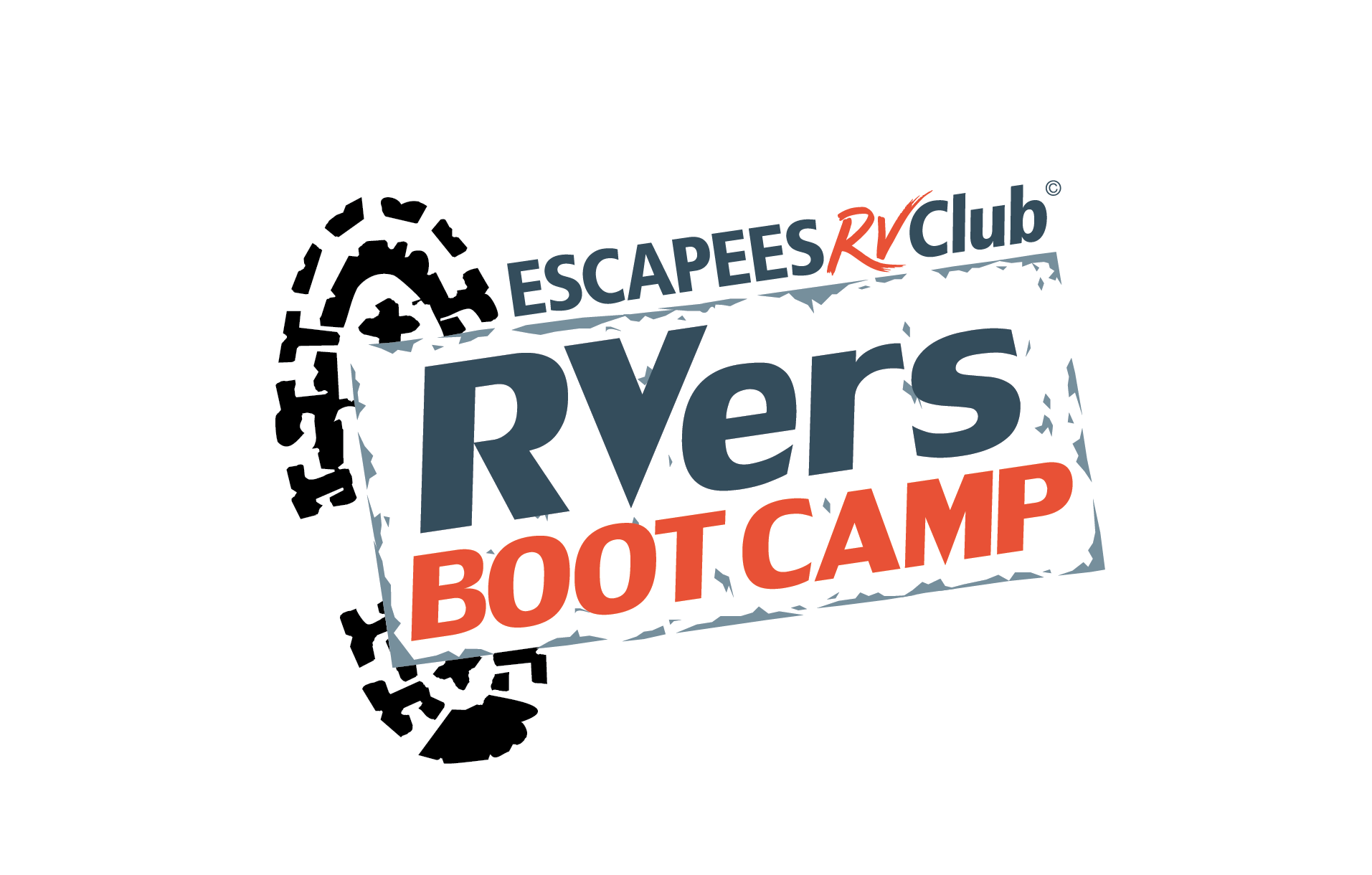


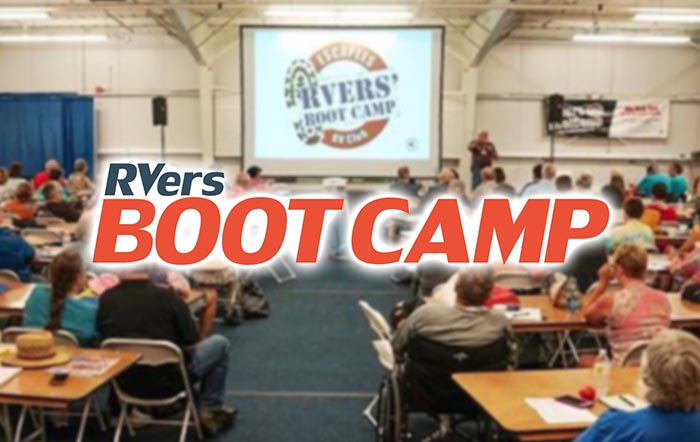
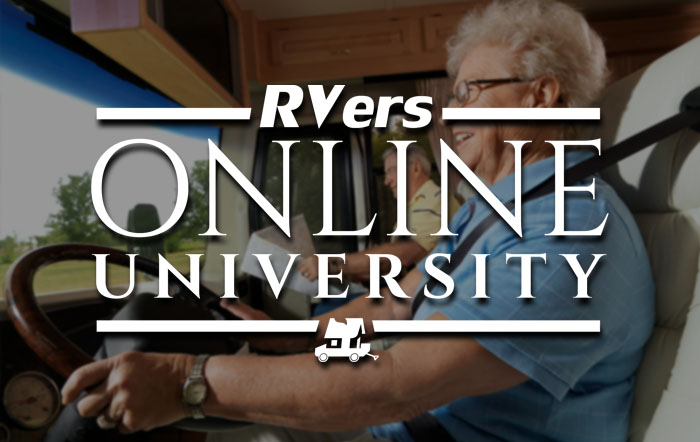

One Response
Rule #1 – The simple answer is to take only what you will use with you. Each trip we reevaluate what we have aboard our RV.
Rule #2 – Buy only what you need & will use, not what you want when on the road.
Things that you want you can buy once you return to your home base.